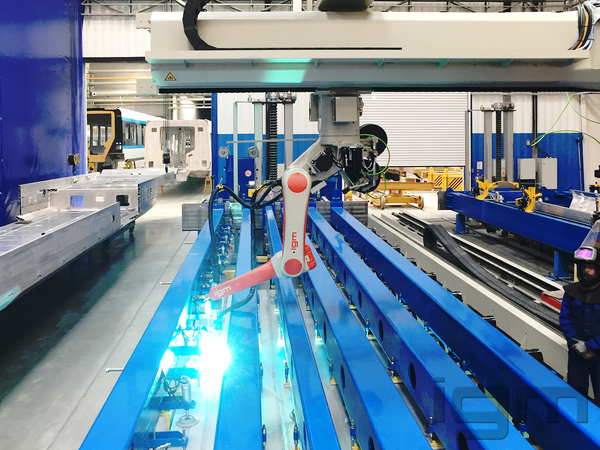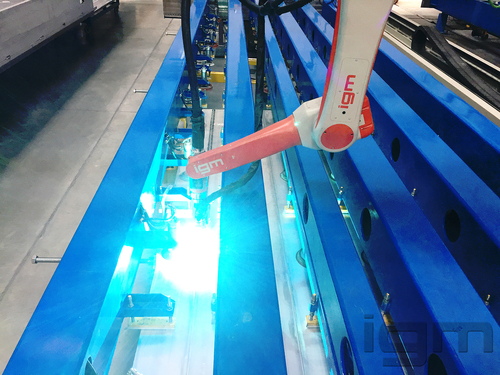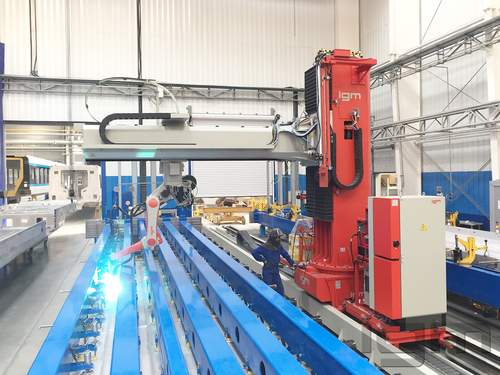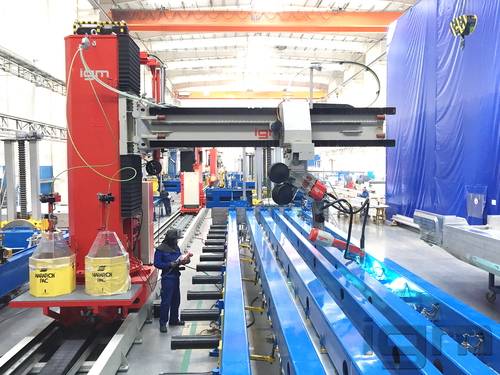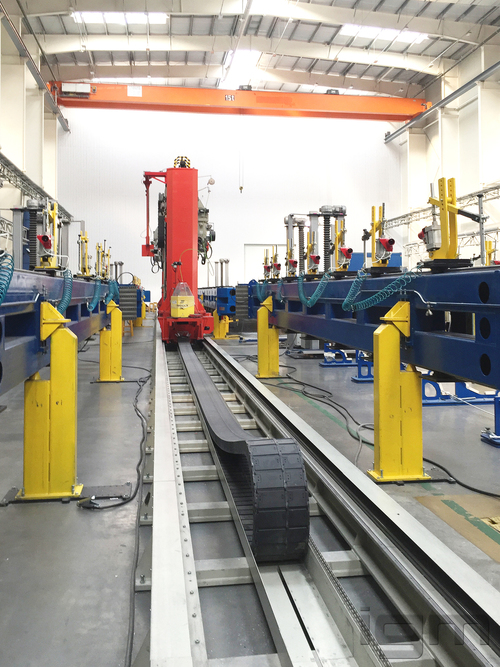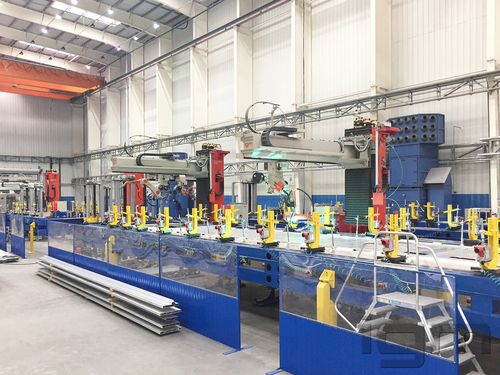Products from the conveyor in Fanipol are delivered not only to the Eurasian Economic Union (EAEU) market, as was originally planned. The plant supplies trains for Norway, double-deck trains for Hungary and Slovenia. Here are also produced trams for Bolivia. The maximum output of the factory makes up 310 aluminium wagons plus 100 steel sections per year.
The quality standard by which Stadler works in Belarus absolutely corresponds to German or Swiss. Very well trained and well-educated staff members made it possible already in the beginning of 2017 to introduce at the plant a robotized welding of large-sized components, such as floors, walls and roofs of carriages.
Based on a detailed comparison of technological and service capabilities, the Austrian company igm Robotersysteme AG was selected as the supplier of welding robot systems. As of mid-2019, two igm systems are already in operation at the plant. In 2020 there should be already four of them!
Each of the welding robot system includes a floor track (56 and 35 meters, respectively), two RSH columns (with a vertical stroke of 1.5 meters) mounted on a rotary module DM, with a TQA cross slide with carriage travel length of 3.7 meters. Each TQA carries one RTE 496 welding robot with a working area radius of 1.9 meters.
Customers' single-axis positioners are located on each side of the floor tracks. Holding fixtures for specific types of workpieces are mounted between their liftable faceplates. The working area of each system is divided into 7 and 5 workstations, respectively. Its relative dimensions (lengths) can be adapted to specific conditions.
The organization of the welding shop of this plant is unique and amazing. Due to unitized design and location of the welding robot systems in one long row (“a street of igm robots”), as well as thanks to a flexible configuration of the safety system (aka protective walls and gates) it is possible to distribute in an optimal way any welding tasks between the stations. The implemented solution also ensures redundancy of the welding robots that operate three shifts per day, 7 days a week.









